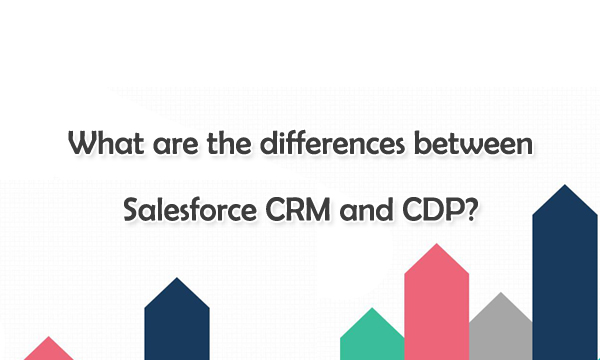What are the differences between Salesforce CRM and CDP?
August 02,2023 03:17 AM
Salesforce CRM (Customer Relationship Management) and CDP (Customer Data Platform) are both software solutions designed to manage and utilize customer data, but they serve different purposes and have distinct functionalities. Here are the key differences between Salesforce CRM and CDP:

Purpose and Scope
Salesforce CRM: Salesforce CRM is primarily focused on managing and automating customer interactions, sales processes, marketing activities, and customer support. It centralizes customer data and provides tools to track leads, manage opportunities, and nurture customer relationships.
CDP: A Customer Data Platform, on the other hand, is designed specifically to aggregate and unify customer data from various sources, such as websites, mobile apps, social media, email interactions, and offline touchpoints. The primary goal of a CDP is to create a comprehensive, unified view of each customer to support better personalization, segmentation, and data analysis across different marketing and customer engagement platforms.
Data Collection and Integration
Salesforce CRM: Salesforce CRM captures and stores data related to sales, marketing, and customer service activities within its platform. It may also integrate with other applications to exchange data across different business processes.
CDP: A CDP is built to collect, integrate, and unify customer data from a wide range of sources, such as CRM systems, websites, mobile apps, marketing automation tools, transactional systems, and more. It creates a single, consistent customer profile by merging data from different touchpoints, even if the data is in various formats.
Data Management
Salesforce CRM: While Salesforce CRM manages customer data within its platform, it may not be as comprehensive in handling large volumes of data from various sources outside its ecosystem.
CDP: A CDP excels in managing large volumes of customer data and can handle both structured and unstructured data. It focuses on data cleansing, deduplication, and creating a single source of truth for customer information.
Data Activation and Personalization
Salesforce CRM: Salesforce CRM allows businesses to leverage customer data to manage sales pipelines, create targeted marketing campaigns, and provide better customer support. However, its focus is more on sales and customer support workflows.
CDP: A CDP empowers marketers with a unified view of customers and provides insights for better segmentation and personalization across all marketing channels, including email marketing, social media, targeted advertising, and more.
Business Use Cases
Salesforce CRM: Salesforce CRM is suitable for sales teams, customer service departments, and marketing teams looking to manage leads, opportunities, accounts, and customer interactions.
CDP: A CDP is beneficial for marketers and data analysts who want to unify customer data from various sources, gain a deeper understanding of customer behavior, and create personalized experiences across multiple marketing channels.
Salesforce CRM is primarily a tool for managing customer interactions and sales processes, while a CDP is a data management platform that focuses on aggregating and unifying customer data from multiple sources to enable better marketing personalization and segmentation. The two can complement each other, with a CDP providing a more holistic view of customers to enhance the capabilities of a CRM system.
- Related Suggestion
- Salesforce AI Specialist vs. Salesforce Agentforce Specialist: Key Differences and Updates March 05,2025
- Top Careers You Can Pursue with Salesforce AI Certifications January 22,2025
- Differences Between Salesforce AI Associate and AI Specialist Exams January 13,2025
- New Salesforce Slack Developer Exam Dumps Available November 04,2024
- Salesforce AI Specialist Exam Dumps Help You Pass and Get Certified October 07,2024
- Salesforce Data Cloud Consultant Exam: Data Ingestion and Modeling Outline July 29,2024

